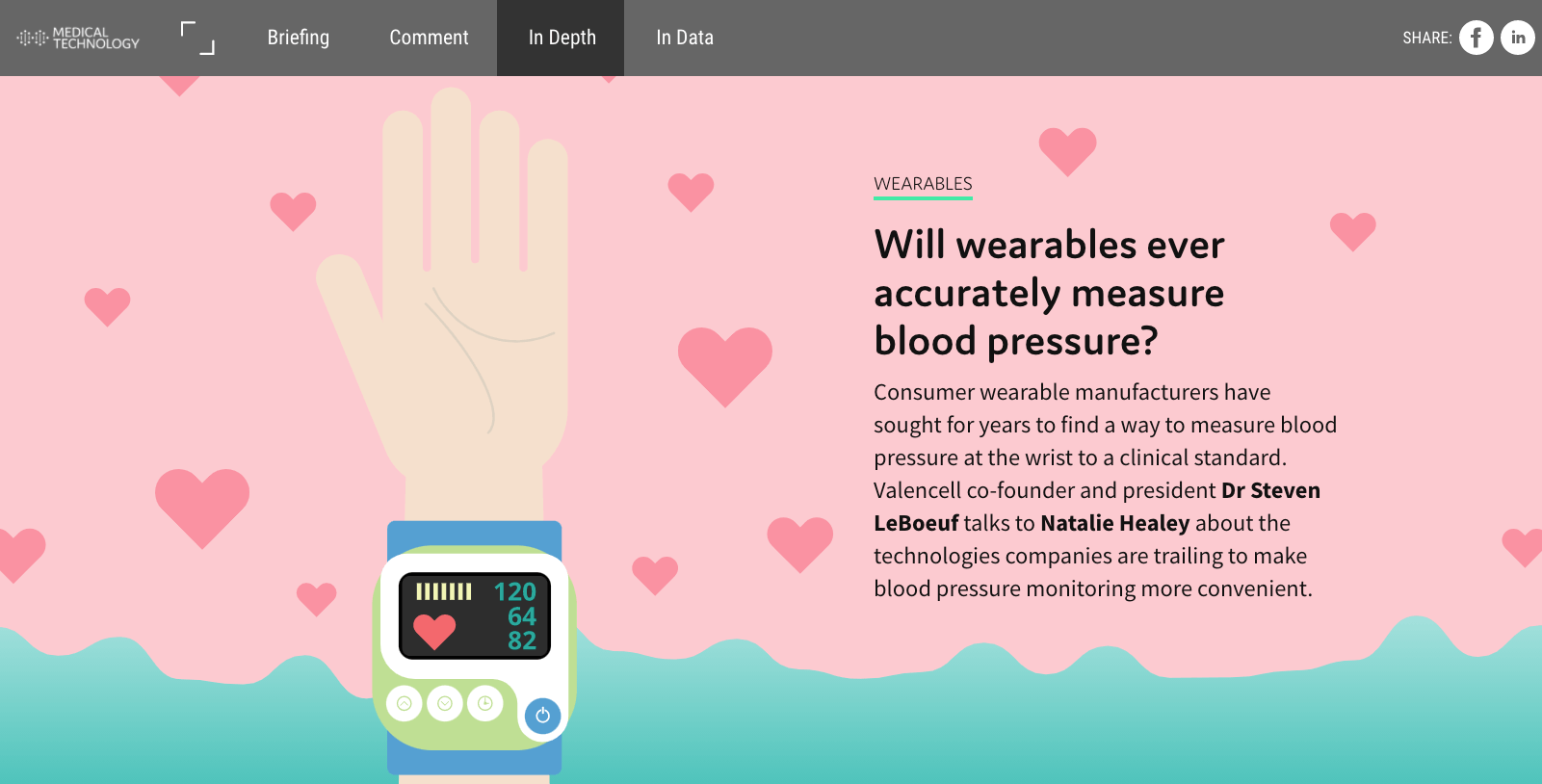Will wearables ever accurately measure blood pressure?

Consumer wearable manufacturers have sought for years to find a way to measure blood pressure at the wrist to a clinical standard. Valencell co-founder and president Dr Steven LeBoeuf talks to Natalie Healey about the technologies companies are trailing to make blood pressure monitoring more convenient.
Every year, 9.4 million people die from complications related to high blood pressure, according to the World Health Organization. But many people with hypertension aren’t even aware they have it.
You only know whether your numbers are on the high side if you get your blood pressure checked regularly. Doctors do this with a traditional arm cuff reader – and similar products are also available for home use – but such devices have limitations.
Research published in the International Journal of Preventive Medicine suggests at-home blood pressure cuffs can lead to errors due to ill-fitting bands and improper arm positioning. In a medical setting, ‘white coat syndrome’ (where a patient’s blood pressure is elevated from the stress of being in a medical setting) is a common problem.
The arm cuff device is also not well designed for larger patients. Many health tech companies are now exploring more convenient ways for people to measure their blood pressure using wearable technology.
In April 2021, Fitbit announced a trial to determine whether its smartwatches can accurately detect hypertension. Preliminary research suggests the device can be used to measure blood pressure from the wrist, but the new study will extend those findings to a larger population.
The company acknowledges that although there is great interest in monitoring blood pressure using wearables, this method has not yet been properly validated. Wrist measurements have so far failed to prove as accurate as those from a cuff. Fitbit users in the US who are at least 20 years old are participating in the study.
Fitbit is not alone in trying to find less intrusive ways for people to measure their blood pressure. For instance, Samsung’s new Galaxy Watch uses optical heart rate sensors to measure blood pressure at the wrist, but users still have to calibrate the feature using a cuff every four weeks.
Dr Steven LeBoeuf is co-founder of Valencell, a company that makes biometric sensors for consumer tech companies. In early 2021, Valencell announced its cuffless blood pressure technology could be used in devices worn on the finger and wrist, such as a smartwatch or pulse oximeter finger clip.
The company says the technology is the first commercially available sensor to enable blood pressure readings throughout the day with the same accuracy as a cuff device. The announcement follows findings in January 2020 that its sensors could identify hypertension with 89% accuracy when used in hearing aids or earbuds.
This article appeared in Medical Technology Magazine. We encourage you to read the full article here.